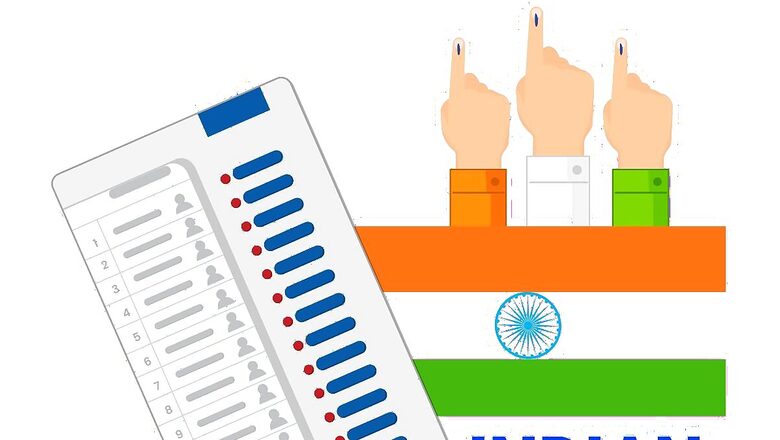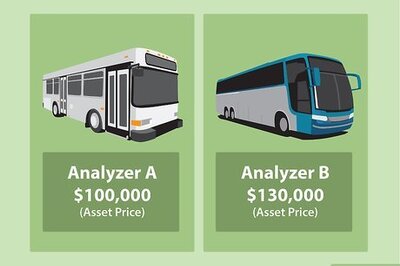Kodarma is one of the 14 Lok Sabha constituencies in the state of Jharkhand and covers the entire Koderma district and parts of the Hazaribagh and Giridih districts. Kodarma Lok Sabha constituency comprises of the following six assembly segments — Kodarma (BJP), Barkatha (Independent), Dhanwar (BJP), Bagodar (CPI-ML), Jamua (BJP) and Gandey (JMM). The current MP is BJP’s Annapurna Devi Yadav who will be up against Vinod Kumar Singh of the CPI-ML, which is part of the INDIA bloc. The constituency will vote in Phase 5 of the 2024 Lok Sabha elections on May 20.
Political Dynamics
BJP Eyes Hattrick Amid Stiff Challenge: In 2019, the BJP’s Annapurna Devi Yadav won Kodarma LS with a staggering margin of 4.55 lakh votes, making her a political shark of sorts which ensured she got a seat in Prime Minister Narendra Modi’s Council of Ministers. The BJP has fielded Yadav once again, but the contest in Kodarma is significantly tougher for the saffron party this time around. What will be of solace to the party is Yadav’s massive victory margin in 2019, which gives the party a lot of legroom to lose votes and still retain the seat. In this constituency dominated by Yadavs, Muslims and other backward castes, BJP in coordination with other backward Vaishya and forward castes has always been dominant over the alliance of Congress, RJD and Left parties. In 2019, the Yadav voters got polarised towards BJP, as a result of which the victory margin was so wide. This time, Babulal Marandi’s JVM, which has built a strong organisation in the region for 10 years, has merged with the BJP.Caste Matrix: This time too, the Yadav vote is expected to largely stick with the BJP. However, some complexities appear to be arising for the BJP among the other castes, as a broad coalition of Congress, JMM, Left and RJD has come together to take on Yadav. Given the Opposition’s umbrella coalition, the fight in Kodarma has turned very interesting, and it now remains to be seen whether the BJP’s previous caste arrangements can survive now. The BJP had dropped Ravindra Ray in 2019 to make way for Annapurna Yadav in Kodarma. This time too, Ray has not been able to secure a ticket. Since Ravindra Ray belongs to the Bhumihar caste, there is some discontent within the community which is being noticed in the run-up to the election in Kodarma. This should be a cause of concern for the BJP, since the Rajput-Bhumihar combine, if it consolidates in favour of the opposition candidate, could spell some serious trouble for Annapurna Yadav and the saffron camp. To add to the BJP’s woes, the Khushwahas have been very upset about a candidate from their community not being fielded. The community has been voicing their opposition to Annapurna Yadav’s candidacy and claiming that their 4.5 lakh voters — who have always supported the BJP — will now rethink their preferences. Now, if the BJP loses the Rajput-Bhumihar-Khushwaha votes, it will be left mostly with the Yadavs, and in such a scenario, the contest here will become neck-and-neck. At present though, the BJP retain a slight edge, and PM Modi’s campaign here is going to be pivotal in ironing out caste and community differences.Not All Happy With Annapurna Yadav: The Yadav vote will continue to be the deciding factor in this election too. In fact, at a time when there is some disillusionment among the Khushwahas, Rajputs and Bhumihars, former BJP MLA Jai Prakash Verma has entered the electoral fray in Kodarma as an independent candidate. This has led to some degree of Khushwaha voter consolidation in his favour, posing a threat to the BJP’s calculations here. To counter the Khushwaha threat, the Yadav Mahasabha here has come out in open support of the BJP and Annapurna Yadav. Meanwhile, there are complaints against Annapurna Yadav in Kodarma. Voters call her an absent MP who has not done any significant work for the constituency. Yadav does face considerable anti-incumbency, and if the BJP retains the seat, it will mostly be on the back of Yadav voters and the Modi factor. While the Modi factor appears to be a bit subdued this time around, voters are generally happy with the work his government has done since 2014 and see him as the only viable leader to vote for at a national scale.INDIA Bloc’s Strategy: For the opposition INDIA bloc, the fight for Kodarma was never expected to be easy, given the staggering victory margin of the BJP from this constituency in 2019. The Opposition’s sole focus for Kodarma is to make the election here as local and caste-centric as possible. The Congress-JMM-RJD-CPI(ML) combine is an umbrella coalition that is highlighting the issues faced by the people here, which is why a Modi wave per se is not being seen. While people are generally happy with the Modi government, their enthusiasm is getting bogged down by local issues – which are many. As a part of the INDIA bloc, Kodarma LS constituency has been given to the CPI-ML, which has fielded Vinod Kumar Singh as its candidate here. He is a Rajput, which is a factor that could upend the BJP’s own caste arithmetic if Rajput voters choose to side with the INDI bloc candidate. This year, when Hemant Soren had to resign due to the ED’s arrest, it was the CPI-ML legislator who played an important role in the formation of Champai Soren’s government and met the Governor several times along with the alliance leaders. Singh is also currently the MLA of Bagodar. As such, he is no political lightweight.Gunning for Victory: Vinod Singh is trying to capitalise on the anti-incumbency which Annapurna Yadav faces and is also frequently seen lashing out at the Modi government. Although the INDIA bloc has a greater bulk of political participants, ranging from the likes of the Congress and JMM to the CPI-ML and RJD, the BJP has the Jharkhand Vikas Morcha (JVM) of former chief minister Babulal Marandi on his side. In 2019, Marandi contested the election from Kodarma, and hauled in an impressive 2.97 lakh votes, despite losing to the BJP. In 2020, the JVM merged with the BJP, and the outcome of that development is expected to play out in the BJP’s favour now, as the JVM and Babulal Marandi’s support base throws its weight behind the saffron party. The INDIA bloc is relying mostly on caste fissures here in Kodarma and is hoping that the counter-Yadav polarisation will help it sail through. The opposition is also assured of the roughly 20 per cent Muslim vote which exists in Kodarma. While that may result in Vinod Singh receiving an impressive number of votes, it may still not prove to be sufficient to unseat the BJP. This is because while the caste tensions could divert many non-Yadav voters away from the BJP, there is little likelihood that there will be a cent-per-cent transference of votes of other castes away from the saffron camp. The caste anger appears to be largely local.Key Issues
Unemployment: The biggest issue in Kodarma remains that of unemployment. This is fuelling not just migration, but also disillusionment among the public, especially the youth. The lack of industrial units and factories only exacerbates the problem.Mica Woes: Kodarma in Jharkhand was once known as the mica capital of India. However, after the passage of the Forest Conversation Act of 1980, mica mines were shut down in the name of wildlife conversation. This caused an economic downturn in the region that continues to this day. All of a sudden, an employment avenue which scores of families across the Kodarma and Giridh districts depended on for generations was shut down. The mica mining industry is still operational, but corporations have been replaced by unlicensed middlemen. Now, labourers hunt for mica in abandoned mines. Even today, a kilogram of Mica scraps sells for anywhere between Rs 3-Rs 15. Labourers usually involve their families to ensure more earnings, and instances of child labour are very easy to come by in Kodarma. Despite the mica industry being in shambles, the government has taken no policy initiative to legalise the mining of mica in a sustainable manner. The BJP is having to face local resentment for its failure to resolve the issue, despite being voted to power by the people of Kodarma with a staggering lead in 2019. The opposition, on the other hand, is promising to legalise mining of mica if voted to power.Stone Mining: Like Mica, Kodarma is also a rich repository of precious stones. Blue, white and moon stones are found in abundance in the district, and yet, their mining remains illegal. For voters in Kodarma, it makes little sense to disallow mining activities, especially at a time when the government is unable to provide alternate avenues of employment and livelihood. They see little reason for such mining activities to be criminalised when their livelihood is on the line.Caste Differences: The caste divisions in Kodarma have become even more pronounced as election fever grips the constituency. The Yadavs are throwing their weight behind the BJP, while the other castes — Bhumihars, Rajputs and Khushwahas — are unhappy with the saffron party for not fielding a leader from their communities. There is a distinct caste polarisation that can be seen in Kodarma as a result, and it may well outlast the ongoing election.Development
Solar Power: In September 2023, a 2 MW ground-mounted solar plant in the Koderma Thermal Power Plant was fired up. Work on the remaining 8 MW solar plant was subsequently completed, as a result of which 10 MW electricity is now produced simultaneously through the solar plant.Controlling Air Pollution: In March, PM Modi virtually inaugurated the retrofitting pollution control (FGD) system installed at the Koderma Thermal Power Plant. This has given a big boost to efforts aimed at containing air pollution in Kodarma, since prior to the FGD system being installed, 600 to 650 milligrams of smoke were emitted from Koderma Thermal Power Plant. After the installation of the unit of FGD plant, the emission of smoke has been reduced to only 200 mg.Nursing College: In February, PM Modi laid the foundation for a new B.Sc. Nursing College and Hostel in Karma, located in the Koderma district, with an investment of around Rs 24.51 crore.New Library: In June 2023, MP Annapurna Yadav laid the foundation for a library under the Jhumri Tilaiya Municipal Council of Koderma. This library, with a cost overlay of Rs 6 crore, will have seating arrangements for 300 to 400 children simultaneously. Apart from this, extensive arrangements will be made in the new library building for the preparation of competitive exams. This library will replace the existing one in the Kaushal Vikas Bhawan, which can house just about 30 students.Demographics
Total Voters: 18,67,022
SC Voters: 263,250 (14.1%)
ST Voters: 110,154 (5.9%)
Muslims: 381,195 (20.4%)
Urban Voters: 123,223 (6.6%)
Rural Voters: 1,743,799 (93.4%)
Voter Turnout in 2019 General Election: 66.6%
Explore in-depth coverage of Lok Sabha Election 2024 Schedule, Voter Turnout, Upcoming Phase And Much More At News18 Website




















Comments
0 comment